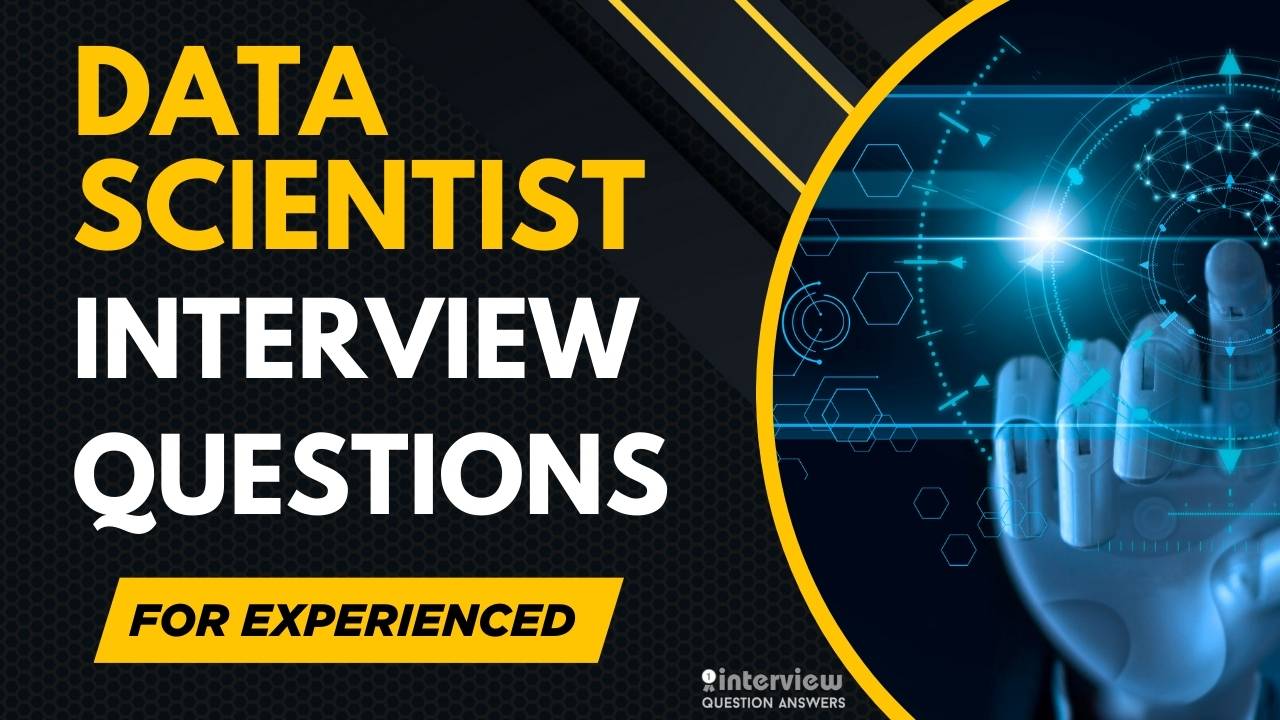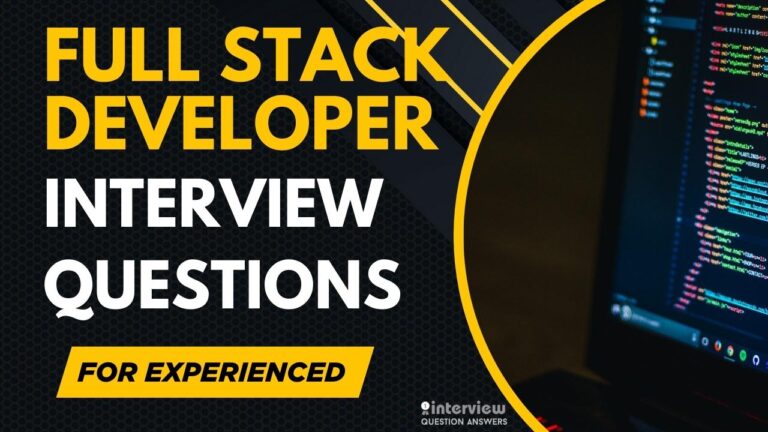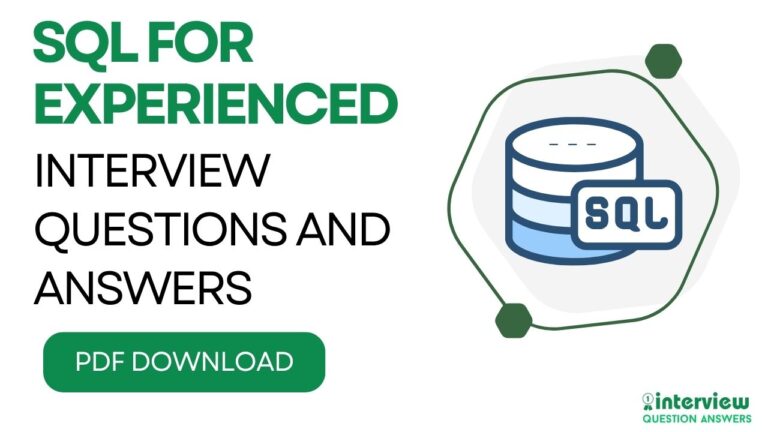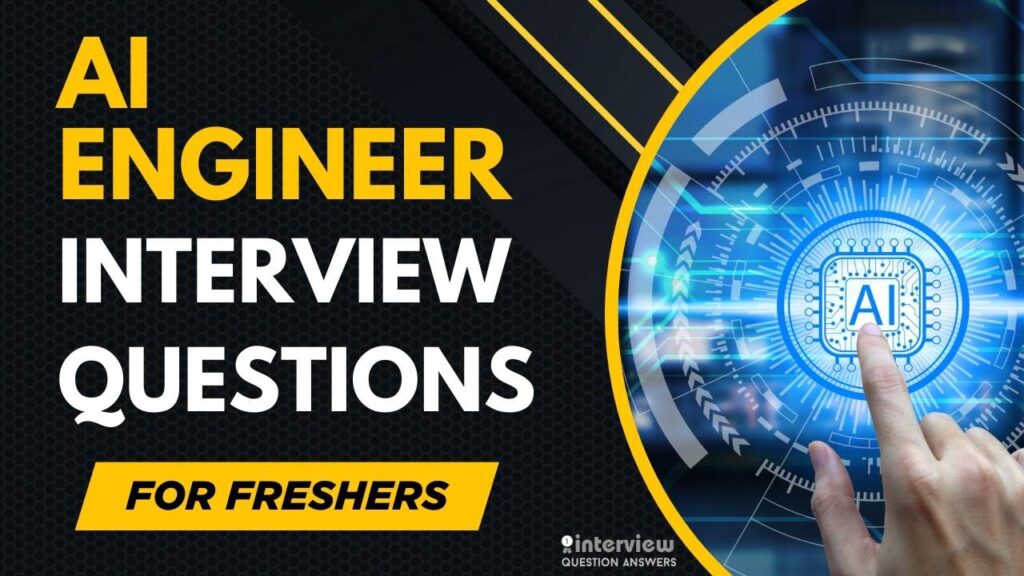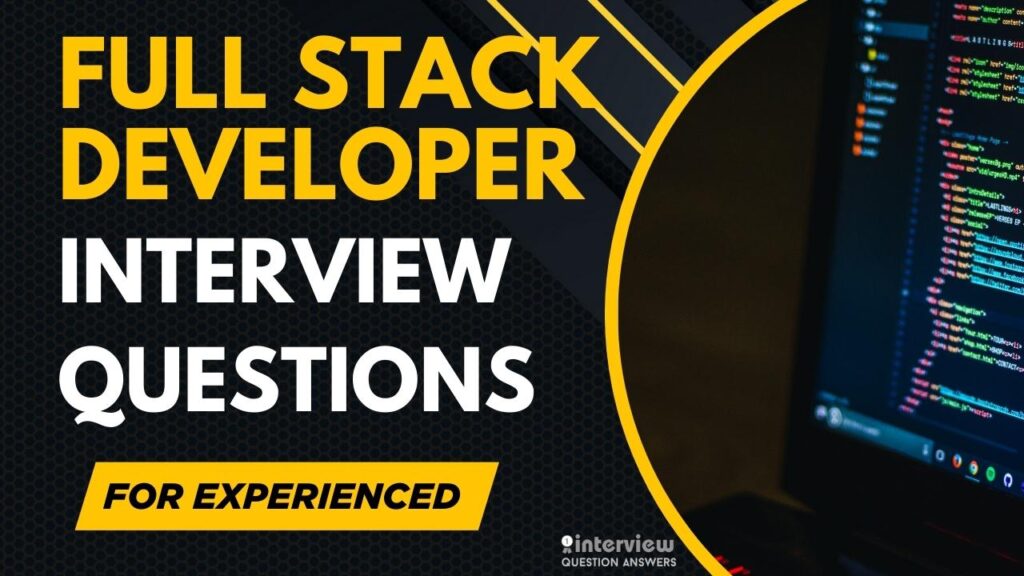Top 50 Data Scientist Interview Questions for Experienced 2025
Advancing to senior data science positions requires demonstrating deep technical expertise and strategic business impact beyond foundational skills. Data Scientist Interview Questions for Experienced professionals focus on complex model architectures, MLOps implementation, and cross-functional leadership that seasoned practitioners encounter.
This comprehensive guide covers Data Scientist Interview Questions for Experienced candidates with multiple years of industry experience, addressing advanced machine learning techniques, system design decisions, and team collaboration scenarios.
These Data Scientist Interview Questions for Experienced professionals will help you showcase your expertise, demonstrate measurable business outcomes, and prove your readiness for senior data science roles in today’s competitive landscape.
You can also check our in-depth interview guide here: Data Scientist Interview Questions PDF
Table of Contents
Data Scientist Interview Questions for 2 Year Experience
Que 1. What is the difference between bias and variance in machine learning models?
Answer: Bias is the error from overly simplistic assumptions in the learning algorithm, leading to underfitting. Variance is the error from sensitivity to small fluctuations in the training data, leading to overfitting. Experienced candidates should balance bias and variance using techniques like regularization or ensemble methods to achieve optimal model performance.
Que 2. How does a random forest work, and why is it effective for handling overfitting?
Answer: A random forest is an ensemble method that builds multiple decision trees on random subsets of data and features, then aggregates predictions via voting or averaging. It reduces overfitting by averaging out individual tree biases and variances, making it robust for classification and regression tasks.
Example:
from sklearn.ensemble import RandomForestClassifier
clf = RandomForestClassifier(n_estimators=100)
clf.fit(X_train, y_train)
predictions = clf.predict(X_test)Que 3. What is the purpose of cross-validation in model evaluation?
Answer: Cross-validation divides the dataset into k-folds, training the model on k-1 folds and testing on the remaining fold, repeating k times. It provides a more reliable estimate of model performance by reducing variance in evaluation metrics compared to a single train-test split.
Que 4. Explain the concept of a confusion matrix and its key metrics.
Answer: A confusion matrix is a table showing true positives (TP), true negatives (TN), false positives (FP), and false negatives (FN) for a classification model.
| Metric | Formula | Description |
|---|---|---|
| Accuracy | (TP + TN) / (TP + TN + FP + FN) | Overall correctness |
| Precision | TP / (TP + FP) | Positive prediction accuracy |
| Recall | TP / (TP + FN) | True positive rate |
| F1-Score | 2 * (Precision * Recall) / (Precision + Recall) | Harmonic mean of precision and recall |
Que 5. How do you handle imbalanced datasets in classification problems?
Answer: Techniques include oversampling the minority class (e.g., SMOTE), undersampling the majority class, using class weights in models, or ensemble methods like balanced random forests. For experienced candidates, evaluating with metrics like F1-score or AUC-ROC is essential over accuracy.
Que 6. What is principal component analysis (PCA), and when would you use it?
Answer: PCA is a dimensionality reduction technique that transforms features into orthogonal components capturing maximum variance. Use it for high-dimensional data to reduce features while preserving information, improving model training efficiency and visualization.
Que 7. Describe the k-means clustering algorithm and its limitations.
Answer: K-means partitions data into k clusters by minimizing within-cluster variance, initializing centroids, assigning points to nearest centroids, and updating centroids iteratively. Limitations include sensitivity to initial centroids, assuming spherical clusters, and needing predefined k (use elbow method to determine).
Que 8. What is the role of activation functions in neural networks?
Answer: Activation functions introduce non-linearity, allowing neural networks to learn complex patterns. Common ones include ReLU (for hidden layers to avoid vanishing gradients), Sigmoid (for binary classification), and Softmax (for multi-class outputs).
Que 9. How do you select features in a machine learning model?
Answer: Methods include filter (e.g., correlation), wrapper (e.g., recursive feature elimination), and embedded (e.g., Lasso regularization). For experienced candidates, combining methods like using SelectKBest with RFE optimizes model performance.
Que 10. What is the bias-variance tradeoff, and how do you address it?
Answer: The bias-variance tradeoff balances model simplicity (high bias, underfitting) and complexity (high variance, overfitting). Address it with regularization, ensemble methods (e.g., bagging), or cross-validation to find the sweet spot for generalization.
Data Scientist Interview Questions for 3 Year Experience
Que 11. Explain gradient descent and its variants.
Answer: Gradient descent optimizes parameters by iteratively moving in the direction of the negative gradient of the loss function. Variants include batch (full dataset), stochastic (single sample, faster but noisy), and mini-batch (balance of both). For experienced candidates, Adam optimizer combines momentum and RMSprop for adaptive learning.
Que 12. How does a convolutional neural network (CNN) work for image data?
Answer: CNNs use convolutional layers to extract features via kernels, pooling layers to reduce dimensionality, and fully connected layers for classification. They’re effective for images due to parameter sharing and local connectivity, reducing computational load.
Que 13. What is the curse of dimensionality, and how do you mitigate it?
Answer: The curse of dimensionality refers to increased volume in high-dimensional space, leading to sparse data and overfitting. Mitigate with dimensionality reduction (e.g., PCA, t-SNE) or feature selection to improve model performance and efficiency.
Que 14. Describe the workings of a support vector machine (SVM).
Answer: SVM finds a hyperplane that maximizes the margin between classes in a high-dimensional space. It uses kernel tricks (e.g., RBF) for non-linear separation. For experienced candidates, handling soft margins with C parameter balances errors and generalization.
Que 15. How do you evaluate a clustering model’s performance?
Answer: Use internal metrics like Silhouette Score (cohesion vs. separation) or Davies-Bouldin Index, and external metrics like Adjusted Rand Index if labels are available. For experienced candidates, visualizing with elbow plots or PCA aids evaluation.
Que 16. What is time series forecasting, and how do you use ARIMA models?
Answer: Time series forecasting predicts future values based on historical patterns. ARIMA (AutoRegressive Integrated Moving Average) combines AR, differencing (I), and MA terms. For experienced candidates, use statsmodels to fit models and check stationarity with ADF test.
Example:
from statsmodels.tsa.arima.model import ARIMA
model = ARIMA(data, order=(1,1,1))
model_fit = model.fit()
forecast = model_fit.forecast(steps=5)Que 17. Explain the concept of transfer learning in deep learning.
Answer: Transfer learning reuses pre-trained models (e.g., VGG16 on ImageNet) for new tasks by fine-tuning layers. It reduces training time and data needs, effective for domains like computer vision or NLP.
Que 18. How do you handle multicollinearity in regression models?
Answer: Detect with VIF (>5 indicates high multicollinearity). Mitigate by removing correlated features, using PCA, or regularization (Ridge/Lasso). For experienced candidates, VIF calculation in Python’s statsmodels is standard.
Que 19. What is a recommender system, and how does collaborative filtering work?
Answer: Recommender systems suggest items based on user preferences. Collaborative filtering uses user-item interactions (matrix factorization or similarity metrics like cosine) to recommend, e.g., “users who liked this also liked that.”
Que 20. How do you optimize hyperparameters in a machine learning model?
Answer: Use grid search, random search, or Bayesian optimization (e.g., with Hyperopt). For experienced candidates, cross-validation with scikit-learn’s GridSearchCV ensures robust tuning.
Example:
from sklearn.model_selection import GridSearchCV
from sklearn.ensemble import RandomForestClassifier
param_grid = {'n_estimators': [50, 100]}
grid = GridSearchCV(RandomForestClassifier(), param_grid, cv=5)
grid.fit(X, y)
Also Check: Data Scientist Interview Questions for Freshers
Data Scientist Interview Questions for 5 Year Experience
Que 21. Explain the workings of a recurrent neural network (RNN) and its applications.
Answer: RNNs process sequential data by maintaining hidden states that capture previous information, using backpropagation through time for training. Applications include time series prediction and NLP. Limitations like vanishing gradients are addressed by LSTMs or GRUs.
Que 22. How do you perform A/B testing analysis, including statistical significance?
Answer: Randomly split users into groups, measure metrics (e.g., conversion rate), and use t-tests or chi-square to assess significance (p-value <0.05). For experienced candidates, power analysis determines sample size.
Que 23. What is natural language processing (NLP), and how do you preprocess text data?
Answer: NLP analyzes human language for tasks like sentiment analysis. Preprocess by tokenization, stemming/lemmatization, stop word removal, and vectorization (e.g., TF-IDF). For experienced candidates, using NLTK or spaCy is common.
Que 24. Explain the concept of bagging and boosting in ensemble learning.
Answer: Bagging (Bootstrap Aggregating) trains models on random subsets and aggregates (e.g., random forest) to reduce variance. Boosting trains models sequentially, focusing on errors (e.g., AdaBoost, XGBoost) to reduce bias. For experienced candidates, boosting often outperforms on tabular data.
Que 25. How do you handle high-dimensional data in machine learning?
Answer: Use dimensionality reduction (PCA, t-SNE), feature selection (mutual information, L1 regularization), or autoencoders. For experienced candidates, avoiding the curse of dimensionality improves model accuracy and efficiency.
Que 26. What is a generative adversarial network (GAN), and how does it work?
Answer: GANs consist of a generator creating fake data and a discriminator distinguishing real from fake, trained adversarially. They’re used for image generation or data augmentation. For experienced candidates, stabilizing training with Wasserstein GANs addresses mode collapse.
Que 27. How do you implement reinforcement learning in a real-world scenario?
Answer: Reinforcement learning trains agents to maximize rewards through actions in an environment (e.g., Q-learning). Real-world applications include robotics or game AI. For experienced candidates, using libraries like OpenAI Gym and handling exploration-exploitation tradeoff is essential.
Que 28. What is the difference between batch normalization and layer normalization in deep learning?
Answer: Batch normalization normalizes across mini-batches, reducing internal covariate shift. Layer normalization normalizes across features, effective for recurrent networks. For experienced candidates, batch norm depends on batch size, while layer norm is batch-independent.
Que 29. How do you optimize a deep learning model for deployment on edge devices?
Answer: Use quantization (reduce precision), pruning (remove weights), or knowledge distillation (train smaller model from larger). For experienced candidates, tools like TensorFlow Lite or ONNX ensure efficient inference on resource-constrained devices.
Que 30. What is the role of attention mechanisms in transformer models?
Answer: Attention mechanisms weigh input importance, allowing models to focus on relevant parts (e.g., self-attention in transformers). They enable parallel processing and long-range dependencies, revolutionizing NLP and vision tasks.
Data Scientist Interview Questions for 7 Year Experience
Que 31. Explain the concept of federated learning and its applications.
Answer: Federated learning trains models across decentralized devices without sharing raw data, preserving privacy. Applications include mobile keyboards or healthcare. For experienced candidates, handling non-IID data and communication efficiency is challenging.
Que 32. How do you implement a clustering algorithm like DBSCAN in Python?
Answer: DBSCAN (Density-Based Spatial Clustering) groups points based on density, handling noise better than k-means. Experienced candidates tune epsilon and min_samples for optimal clustering.
Example:
from sklearn.cluster import DBSCAN
dbscan = DBSCAN(eps=0.5, min_samples=5)
labels = dbscan.fit_predict(X)Que 33. What is the role of regularization in preventing overfitting?
Answer: Regularization adds penalties (e.g., L1, L2) to the loss function, constraining model complexity. Experienced candidates use dropout in neural networks or elastic net for combined L1/L2 effects to balance fit and generalization.
Que 34. How do you handle class imbalance in multi-class classification?
Answer: Use techniques like stratified sampling, SMOTE for oversampling, or class-weighted loss functions. Experienced candidates apply cost-sensitive learning or ensemble methods like AdaBoost, evaluating with macro-F1 scores.
Que 35. What is the difference between word embeddings and bag-of-words?
Answer: Bag-of-words represents text as a sparse vector of word frequencies, ignoring context. Word embeddings (e.g., Word2Vec, GloVe) capture semantic relationships in dense vectors. Experienced candidates use embeddings for NLP tasks requiring context.
Que 36. How do you evaluate a time series model’s performance?
Answer: Use metrics like MAE, RMSE, or MAPE for accuracy, and ACF/PACF for residual analysis. Experienced candidates validate stationarity and use cross-validation with time series splits to avoid data leakage.
Que 37. What is the role of embeddings in deep learning for NLP?
Answer: Embeddings map words or tokens to dense vectors, capturing semantic relationships. Pre-trained models like BERT provide contextual embeddings. Experienced candidates fine-tune embeddings for specific tasks to improve performance.
Que 38. How do you implement anomaly detection in a dataset?
Answer: Use methods like Isolation Forest, One-Class SVM, or autoencoders. Experienced candidates preprocess data for scale invariance and evaluate with precision-recall curves for rare anomalies.
Example:
from sklearn.ensemble import IsolationForest
model = IsolationForest(contamination=0.1)
model.fit(X)
anomalies = model.predict(X) # -1 for anomaliesQue 39. What is the difference between supervised and semi-supervised learning?
Answer: Supervised learning uses fully labeled data, while semi-supervised learning leverages both labeled and unlabeled data, useful when labels are scarce. Experienced candidates apply techniques like self-training or co-training for semi-supervised tasks.
Que 40. How do you design a feature engineering pipeline for a machine learning project?
Answer: Create pipelines with:
- Data cleaning (imputation, outlier removal).
- Feature transformation (scaling, encoding).
- Feature creation (interactions, polynomial features). Experienced candidates use scikit-learn’s Pipeline for automation and reproducibility.
Example:
from sklearn.pipeline import Pipeline
from sklearn.preprocessing import StandardScaler
pipeline = Pipeline([('scaler', StandardScaler()), ('model', RandomForestClassifier())])Data Scientist Interview Questions for 10 Year Experience
Que 41. What is Bayesian optimization, and how do you use it for hyperparameter tuning?
Answer: Bayesian optimization models the hyperparameter space with a probabilistic function (e.g., Gaussian Process), balancing exploration and exploitation. Experienced candidates use libraries like Optuna or Hyperopt for efficient tuning over grid search.
Que 42. How do you handle data drift in production machine learning models?
Answer: Monitor data drift with statistical tests (e.g., Kolmogorov-Smirnov) or metrics like population stability index. Experienced candidates retrain models periodically, use drift detection tools like Evidently, and implement A/B testing for updates.
Que 43. What is the role of attention mechanisms in sequence-to-sequence models?
Answer: Attention mechanisms allow models to focus on relevant parts of the input sequence, improving performance in tasks like machine translation. Experienced candidates use variants like multi-head attention in transformers for scalability.
Que 44. How do you address ethical concerns in data science projects?
Answer: Ensure fairness by auditing models for bias (e.g., disparate impact analysis), use explainable AI (XAI) techniques like SHAP, and comply with regulations like GDPR. For experienced candidates, implementing ethical guidelines and diverse datasets mitigates risks.
Que 45. What is graph neural networks (GNNs), and how are they used?
Answer: GNNs process graph-structured data by aggregating node features from neighbors. Used in social networks or molecular chemistry. For experienced candidates, variants like GCN or GAT handle tasks like node classification or link prediction.
Que 46. How do you scale machine learning models for production?
Answer: Use containerization (Docker), orchestration (Kubernetes), and serving platforms like TensorFlow Serving or Sagemaker. For experienced candidates, monitoring drift with tools like Evidently and A/B testing updates ensure reliability.
Que 47. What is the difference between online learning and batch learning?
Answer: Online learning updates models incrementally with new data (e.g., streaming), while batch learning retrains on full datasets. For experienced candidates, online learning suits dynamic environments like recommendation systems.
Que 48. How do you implement a variational autoencoder (VAE)?
Answer: VAEs encode data to a latent space with mean and variance, then decode, adding KL divergence to loss for regularization. Used for generative tasks. For experienced candidates, tuning beta in loss balances reconstruction and regularization.
Que 49. What is meta-learning, and how does it apply to few-shot learning?
Answer: Meta-learning (“learning to learn”) trains models to adapt quickly to new tasks with few examples. Applications in few-shot learning use techniques like MAML (Model-Agnostic Meta-Learning). For experienced candidates, it’s useful in low-data domains like drug discovery.
Que 50. How do you design a data pipeline for real-time analytics in a large-scale system?
Answer: Design with streaming tools like Apache Kafka for ingestion, Spark or Flink for processing, and Elasticsearch for storage/querying. For experienced candidates, ensuring fault tolerance with replication and monitoring with Prometheus addresses scalability and latency issues.
Conclusion
We have already shared the essential questions for Data Scientist Interview Questions for Experienced professionals. This comprehensive Data Scientist Guide includes interview questions for experienced candidates with advanced industry experience, covering complex technical scenarios and leadership challenges that employers evaluate.
The data science industry is rapidly evolving with generative AI, large language models, and advanced MLOps becoming standard requirements for senior roles. These Data Scientist Interview Questions for Experienced professionals provide the strategic foundation needed to advance your career, covering deep learning architectures to AI product development. With proper preparation using these Data Scientist Interview Questions for Experienced and understanding current industry demands, you’ll be well-positioned to secure senior data science positions.

